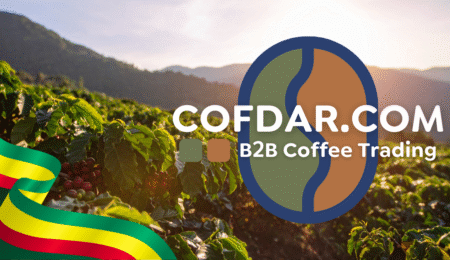The global coffee market witnessed significant shifts in January 2025, driven by factors such as changes in global prices, fluctuations in exports, and the impact of economic policies. This report summarizes key data from the International Coffee Organization (ICO) report, focusing on the main indicators affecting coffee traders and investors.
1. Green Coffee Prices: Record Highs
ICO Composite Indicator Price (I-CIP)
- The average ICO composite indicator price for coffee reached 310.12 cents/lb in January 2025, marking a 3.5% increase from December 2024 and a 75.8% rise compared to January 2024.
- This is the highest monthly price recorded since April 1977 (314.96 cents/lb).
- Daily volatility declined by 2.8%, indicating relative market stability.
Major Coffee Group Prices:
- Colombian Milds: 351.93 cents/lb (+3.2%)
- Other Milds: 354.47 cents/lb (+3.2%)
- Brazilian Naturals: 339.18 cents/lb (+3.7%)
- Robusta: 245.29 cents/lb (+3.6%)
Price Differentials:
- The price gap between Colombian Milds and Other Milds narrowed slightly, from -2.34 to -2.54 cents/lb.
- The price gap between Colombian Milds and Robusta widened by 2.3%, reaching 106.64 cents/lb.
2. Green Coffee Exports: Global Decline with Exceptions
Total Global Exports:
- Green coffee bean exports declined by 10.5% in December 2024, totaling 9.73 million bags (60 kg) compared to the same month in 2023.
Exports by Coffee Group:
- Colombian Milds: Increased 32% to 1.39 million bags, supported by higher production in Colombia and Tanzania.
- Other Milds: Decreased 12.3% to 1.28 million bags, mainly due to lower exports from Honduras and Papua New Guinea.
- Brazilian Naturals: Declined 11.3% to 3.34 million bags, driven by a similar drop in Brazil’s exports.
- Robusta: Fell 19% to 3.71 million bags, with Vietnam’s exports plummeting by 39.5%.
3. Exports by Region: Regional Disparities
- Asia & Oceania: Exports declined 31.2%, primarily due to Vietnam’s lowest export levels since 2014.
- Africa: Exports increased 8%, driven by Ethiopia, Kenya, and Tanzania.
- South America: Declined 2.1%, despite Colombia’s exports rising by 22.1%.
- Mexico & Central America: Slight 0.9% increase, with growth in Costa Rica and Guatemala.
4. Processed Coffee Exports: Sharp Decline
- Instant coffee: Exports dropped 28.2% to 0.94 million bags.
- Roasted coffee: Exports declined 20.9% to 54,546 bags.
- Market share: Instant coffee’s share of total exports fell from 9.6% to 8.8%.
5. Key Market Influencers
- U.S. Trade Policies: New reviews could impact exports from Brazil, India, and Indonesia.
- European Monetary Policy: Expected acceleration in interest rate cuts, potentially boosting coffee demand.
- Brazilian Supply: Production estimates were lowered by 600,000 bags, putting upward pressure on prices.
6. Certified Stocks
- Robusta stocks in London: Increased 3.8% to 0.76 million bags.
- Arabica stocks in New York: Dropped 11.7% to 0.91 million bags.
7. Future Outlook
- Prices: Upward pressure is expected to continue due to supply shortages from Brazil and Vietnam.
- Exports: May improve with the start of new harvest seasons in Vietnam and Colombia.
- Risks: Political and climatic volatility could affect market stability.
Conclusion
January 2025 saw significant shifts in the global coffee market, with rising prices and declining exports in most regions. Traders and investors are advised to closely monitor geopolitical and climatic factors, while focusing on emerging opportunities in African markets and the growing demand for premium coffee.





Leave a Reply